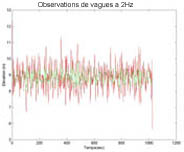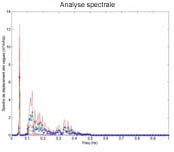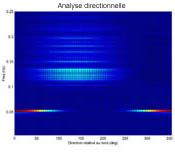


THE MODELING OF WAVES
At the time of the dimensioning of a maritime structure, the principal forces to consider are those caused by waves, the ice, ground pressure and forces of impact. The first stage should make it possible to obtain the maximum of information on the conditions of swell at sea. The conditions of waves offshore are obtained from observations or deduced from available wind measurements. When these waves are propagated towards the coast they are prone to attenuation following the effects of depth and friction; and also due to refraction, diffraction and reflexion phenomena. Moreover, at the time of structure dimensioning, it is necessary to consider the limiting conditions given by the surge of the waves. Establishing a scientific evaluation of energy (force), intensity and the frequency of a wave's occurrence at a given site are critical aspects in the majority of our projects.
Without neglecting the relevance of wave swell recordings as well as
analytical and predictive methods, mathematical modeling represents
an excellent means of limiting the number of observations and reducing the cost
of environmental impact studies. The mathematical models can reproduce the
wind and the processes of wave generation in a given site. The dynamics of
waves is complex and strongly variable so that it is necessary to use a
series of sophisticated models to tackle the many problems that are implied.
These models were validated with laboratory and field data; they require few
field data for start-up.










